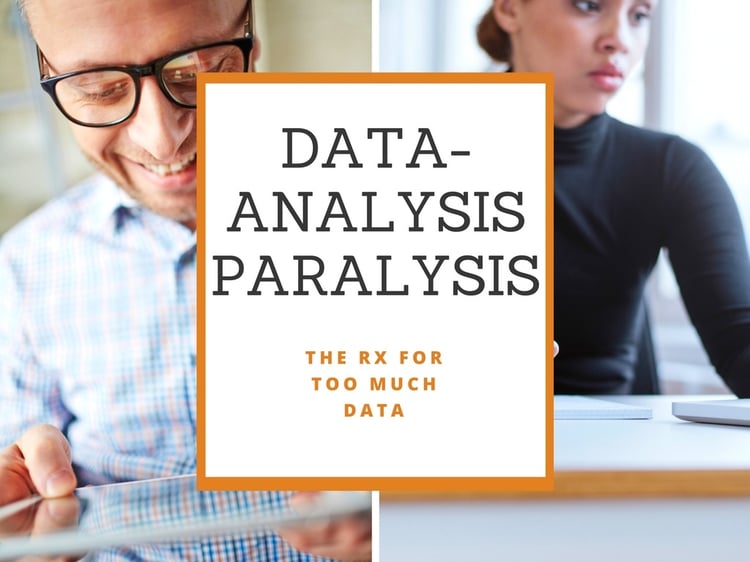In this podcast, Lori talks with NaviStone's Business Development team members, Chris Slomka and Herb Yost, on the topics that are top of mind for Marketers in 2022....

Data-driven consumer focused marketing is not just the wave of the future — it’s the most exciting and effective way to market right now. However, data-driven marketing is only effective if you’re capturing and using the right data. It’s easy to get bogged down in the analysis of data that’s not relevant to your bottom line, only to miss out on the factors that really matter.
Measuring the right data isn’t always easy, and you might not know what you need until it’s too late. Working backwards can help you understand the data points that point to specific consumer behavior, making sure that you’ll never miss out on an opportunity to recruit a long-term customer.
Figure Out Your Endgame
At its core, marketing is based on a company’s desire to induce its customers carry out a specific action. This action can vary depending on the industry and the medium. For example, inbound marketing aims to entice prospects to visit the company website, where they can sign up for your email list. In other instances, the company wants customers to buy products; in others, a business wants to convince people to attend a gathering of like-minded consumers, and in some cases marketing is used to motivate and inspire the audience, like Nike’s ‘Just Do It’ campaign, that encourages their audience to, well, just do it.
Each business has its own marketing goals. And while you ultimately want people to purchase your products, your preliminary goal is to get potential customers to take some sort of action that moves them along their path. Figuring out what that action is early on will make it much easier for you to send the most helpful marketing piece for them at that moment. It’ll also help you to figure out the more common paths customers may take on their journey with your brand.
Identify Steps
It’s one thing to know what you want your customers to do. It’s something entirely different to truly understand what steps people take leading up to their various actions.
This is a complex puzzle to solve in the modern era, where data-driven multichannel marketing has taken center stage. The actions that motivate consumers to purchase, or even to learn more about a company, take many different forms, making it more difficult than ever to understand the motivations of the modern consumer. However, if you break it down from the end point — the purchase, or the email list subscription, or the in-store visit — you can gain tremendous insight into what moves a consumer along their journey.
Consider the motivation of someone who purchases a new iPhone. While they might legitimately be in desperate need of a new phone, what leads them to choose that particular model? Maybe a friend has the newest model and recommends it highly. Which leads them to read some online articles about the phone. Which motivates them to watch a YouTube video showcasing the phone in action. Which prompts them to go to Best Buy to try out a floor model of the phone. And even then, maybe that person didn’t buy the phone without talking to a sales rep or conducting additional research using in-store Wi-Fi. Or, maybe they went home and made the purchase online, where the phone was cheaper.
It’s not possible to tell which step was the most important, nor is it possible to identify one step as the game changer that led this person to finally purchase the phone. Instead, the important thing is the journey itself and how each part of that journey led to Apple’s ultimate goal of persuading someone to purchase a new iPhone.
The journey your customers take might not include so many touchpoints, and it might not even result in a purchase. But a clear understanding of what moves people to take action is essential. If you don’t know what motivates people, you can’t possibly expect to encourage them to do anything. Collecting the right data from the right sources will help you figure out what buttons to push in order to properly move your audience.
Identifying the Correct Data to Analyze
As a CMO, data is all around you. But that just makes it easier for you to fall into a paralysis-by-analysis rabbit hole that is all too difficult to avoid when too much data is at your disposal. Limiting your analysis to a handful of key data sources will help you zero in on the true consumer motivators — those steps your prospects will take on their path towards becoming your customer.
There are a handful of online data sources that are more telling than anything else. Focus your data collection on the following:
- Environment of Target Audience: People in rural areas might spend more time doing online research than city dwellers that have access to plenty of in-person product exposure.
- Location: People who include the keyword “near me” at the end of their searches are often ready to make a purchase right now. Keep tabs on these individuals and market to them aggressively. Use direct mail to let people in the immediate area know there’s a local option that can meet their needs.
- Traffic Source: Prospects who come from a Google search might be in the information gathering stage, whereas someone who comes directly from a competitor’s website might be closer to making a decision. Consider using a high-response strategy, such as direct marketing, to give these people extra incentive to consider purchasing from your company.
- Product Engagement: People tend to get more attached to items just as they’re getting ready to buy them. Social media mentions and shares, as well as comments on your company blog, can be indicative of a consumer’s interest in making a purchase.
- In-Market Segments: Someone who buys from a product group that is closely related to yours is also likely to be interested in your items. If you sell diapers, people who are buying baby food and dye-free cleaning supplies should also be on your radar.
- Page Visits: People who visit your site have an interest in what you offer. It doesn’t necessarily mean they’re ready to buy. Nurturing site visitors can help them become more motivated to make purchases or sign up for your email list in the future.
- Intent Data: Buying-related behavior such as adding items to a cart, creating an online account or visiting the same product page multiple times are indicative of a purchase in the near future. Reach the people who exhibit these behaviors before your competition does. A direct mail postcard featuring the items in question can be a much more effective reminder than one more email.
To Share or Not to Share
While collecting data, there is always a question on the benefits and drawbacks of sharing your first-party data — in other words, the data that’s available only to you — with third-party sources. The data you collect from your website, CRM or social, is authentic and risk-free, but it’s also a major competitive advantage for your company. Nobody else has the insights and the names you have, and it’s your prerogative to keep it that way. Sharing data with third-party vendors means your competition could also benefit from the data you’ve collected. Before you do that, make absolutely certain that the benefits you are receiving from sharing the data outweigh the loss of the exclusivity that you would otherwise have. Simply put, it’s probably not worth the damage you may do to your company. Keep your data in-house, and let it work its magic for your company only.
Keeping Up with Consumers
Keeping up with consumers in the modern marketing world is a challenge for even the most efficient companies. However, sustained excellence in data-driven marketing doesn’t need to involve endless reams of data. It simply requires you to do a little thinking, analysis and strategic planning. Starting with your goal is a great way to figure out what steps consumers must take on that journey. Identifying data points that the typical shopper hits on that path will transform your marketing, making it much easier to target the right customers at the right time.

